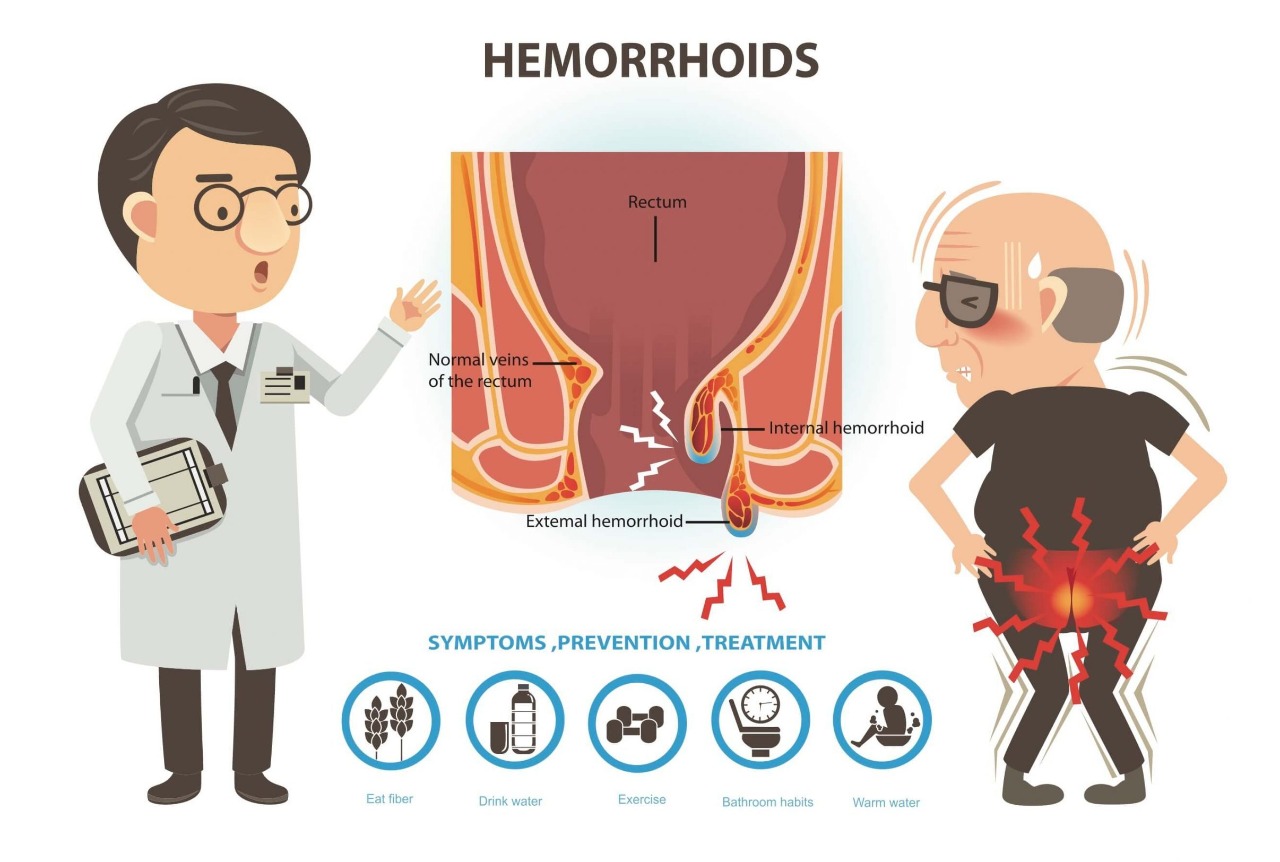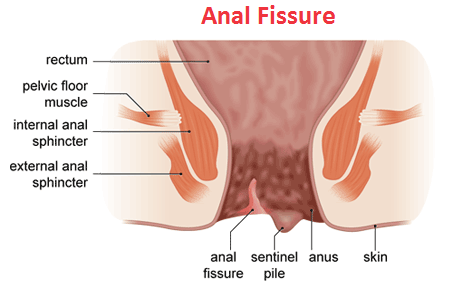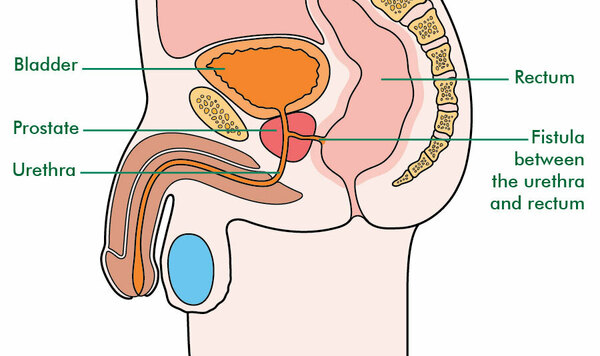Rectal polyps are tissue growths that arise from the wall of the rectum and protrude into it. They may be either benign or malignant (cancerous).
The rectum is the last segment of the large intestine, ending in the anus, the opening to the exterior of the body. Rectal polyps are quite common. They occur in 7-50% of all people, and in two thirds of people over age 60. Rectal polyps can be either benign or malignant, large or small. There are several different types of polyps. The type is determined by taking a sample of the polyp and examining it microscopically. Most polyps are benign. They are of concern, however, because 90% of colon and rectal cancers arise from polyps that are initially benign. For this reason, rectal polyps are usually removed when they are discovered.
The cause of most rectal polyps is unknown, however a diet high in animal fat and red meat, and low in fiber, is thought to encourage polyp formation. Some types of polyps are hereditary. In an inherited disease called familial polyposis, hundreds of small, malignant and pre-malignant polyps are produced before the age of 40. Also, inflammatory bowel disease may cause growth of polyps and pseudo-polyps. Juvenile polyps (polyps in children) are usually benign and often outgrow their blood supply and disappear at puberty. Most rectal polyps produce no symptoms and are discovered on routine digital or endoscopic examination of the rectum. Rectal bleeding is the most common complaint when symptoms do occur. Abdominal cramps, pain, or obstruction of the intestine occur with some large polyps. Certain types of polyps cause mucous-filled or watery diarrhea.
Rectal polyps are commonly found by sigmoidoscopy (visual inspection with an instrument consisting of a tube and a light) or colonoscopy. If polyps are found in the rectum, a complete examination of the large intestine is done, as multiple polyps are common. Polyps do not show up on regular x rays, but they do appear on barium enema x rays.
Normally polyps are removed when they are found. Polypectomy is the name for the surgery that removes these growths. Polypectomy is performed at a hospital, outpatient surgical facility or in a doctor's office, depending on the number and type of polyps to be removed, and the age and health of the patient. The procedure can be done by a surgeon, gastroenterologist, or family practitioner. Before the operation, a colonoscopy (examination of the intestine with an endoscope) is performed, and standard pre-operative blood and urine studies are done. The patient is also given medicated enemas to cleanse the bowel. The patient is given a sedative and a narcotic pain killer. A colonoscope is inserted into the rectum. The polyps are located and removed with a wire snare, ultrasound, or laser beam. After they are removed, the polyps are examined to determine if they are malignant or benign. When polyps are malignant, it may be necessary to remove a portion of the rectum or colon to completely remove cancerous tissue.
In addition to a diet low in animal fat and high in fiber, nutritionists recommend anitoxidant supplements (including vitamins A, C, and E, selenium, and zinc) to reduce rectal polyps.
For most people, the removal of polyps is an uncomplicated procedure. Benign polyps that are left in place can give rise to rectal cancer. People who have had rectal polyps once are more likely to have them again and should have regular screening examinations.
Eating a diet low in red meat and animal fat, and high in fiber, is thought to help prevent rectal polyps

Haemorrhoids, also known as piles, are natural cushions of tissue and veins located at the junction of rectum and anus.
Read More
Per rectal examination is painful due to Spasm of internal sphincter, A split or cut on the posterior or anterior midline of the anal verge.
Read More
A fistula in ano is a hollow tract lined with granulation tissue connecting a primary opening inside the anal canal to a secondary opening in the peri anal skin.
Read More